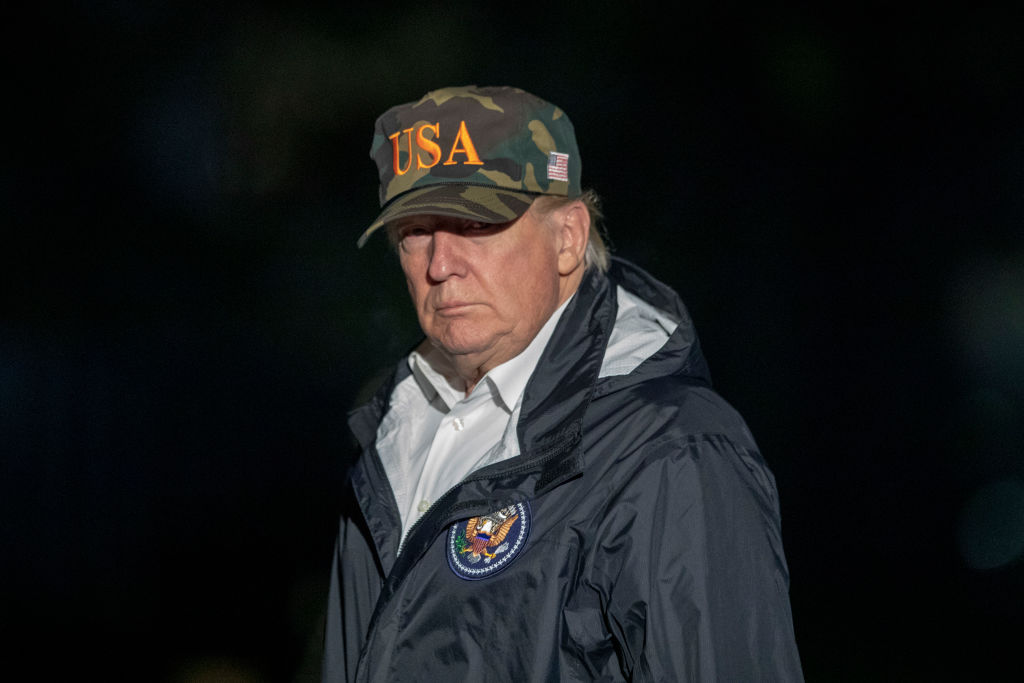For all the good news 2018’s midterms have given Democrats — a House majority, a Senate seat from Arizona, seven more governorships, and an all-blue congressional delegation from Orange County — they have also shown that President Trump has a clear path to re-election in 2020. Midterms historically maximize the relative turnout for the opposition party. More voters overall will go to the polls in 2020 than did so this year, just as more people voted in 2016 than did so this November. But the ratio of Democrats to Republicans will be narrower, if the past anything to go by. What this means is that races Democrats narrowly won this year would probably have been lost if they were fought in a presidential year, and races that Republicans narrowly won would have been won by a greater margin.
This gives President Trump grounds to feel good about Florida in 2020. Republicans won both of this year’s top statewide races, even after Broward county chaos and recounts. The GOP gubernatorial candidate, Ron DeSantis, ran an aggressive, in some ways Trump-like campaign, and prevailed by a wider margin than the comparatively moderate Republican candidate for Senate, Rick Scott. Florida is in effect Trump’s second home state — perhaps at this point it’s his true home state — and of course he won the state in 2016. If Democrats couldn’t pull Florida away from the Republicans this year, the chances of them doing so in 2020, when Trump himself is at the top of the ticket, are slim. And no potential Democratic presidential nominee in two years’ time has any obvious special appeal to Florida or ties comparable to Trump’s.
In Ohio, another essential state for Trump’s 2020 prospects, former Republican senator Mike DeWine beat Democrat Richard Cordray by a solid four points. The man who replaced DeWine in the Senate after the 2006 election, Democrat Sherrod Brown, had no trouble besting Republican hopeful Jim Renacci in this year’s Senate contest. Which of these two races is the better proxy for the presidential contest in 2020? Unless Brown is the Democratic presidential nominee, the DeWine-Cordray race is the more plausible analogue. Brown could be a formidable Democrat in November 2020, but his odds of getting his party’s nomination are long. His national profile is slight, and he does not excite his party’s left-wing base on either economics or identity politics. Trump, who won Ohio by eight points in 2016, is the favorite to win there again in 2020.
That would be true even if Brown were the Democrats’ vice presidential nominee — he might help to cut into Trump’s margin, but voters pay most attention to the top of the ticket, and in almost any scenario where Brown is the VP, a more left-wing Democrat would have to be on top. The wild card in this is Joe Biden — if he could get the Democrat nomination without too much resistance from the party’s left, he might have the clout to pick a figure like Brown as his running mate. That would be a serious threat to Trump’s chances in Ohio. On the other hand another outlier scenario, an independent presidential bid by outgoing Ohio governor John Kasich, would probably help Trump. As the 2018 cycle demonstrated, by now most NeverTrump Republicans are in fact Democratic voters, and a second non-Trump choice on the ballot would only detract from the Democrats’ total.
Trump can’t take either state for granted, and Florida’s approval of a ballot initiative this month to restore voting rights to felons is expected to help Democrats in two years’ time. But Republican successes in Ohio and Florida this year, amid midterm conditions favoring the Democrats, give the president reason for confidence. These are states he can win again, and likely will.
If he does keep Ohio and Florida, Trump has three paths to re-election even without widening the battlefield — by putting Minnesota, for example, narrowly won by Clinton last time, into play. The remaining critical states would be Pennsylvania, Michigan, Wisconsin, and Arizona. Trump could win Pennsylvania plus any one of the other states. Or he could win Michigan along with any one of the others. He could even lose both Pennsylvania and Michigan, as long as he wins Arizona, Wisconsin, and the one electoral vote from Maine that he took in 2016. Trump’s re-election, like his initial victory over Hillary Clinton, hinges on the Rust Belt.
Republicans suffered a setback in Wisconsin this November, with Governor Scott Walker losing to Democratic challenger Tony Evers by less than a one and a half points. But again, this bad news amid the turnout conditions of a midterm election may in fact be good news for President Trump — with the wind at their backs, the Democrats only just managed to topple Walker. That suggests it’s still very much a winnable state for Republicans in a presidential year.
The same is probably true for Arizona, where in this year’s Senate contest Democrat Kyrsten Sinema prevailed against Republican Martha McSally by a little more than two points. But Arizona is culturally caught in the gravitational pull of California, and it may be the case that Trump’s Rust Belt strategy is ineffective in the Sun Belt. The president and his campaign team have a tough choice to make between whether to focus on the industrial states surrounding the Great Lakes as a cluster — perhaps with a pitch focused on economic nationalism — or whether to add a culturally and economically very different state like Arizona to the mix. Presidential politics is regional, and the states east and west of Arizona are blue, with only Utah to the north remaining red. And Utah is not altogether a Trump Republican state, as its election of Mitt Romney to the Senate shows (even as Arizona ditched the anti-Trump Jeff Flake).
Michigan and Pennsylvania had no good news for Trump this November, but no unexpected bad news, either: Democratic incumbents easily held the Senate seats in both states and the Pennsylvania’s governorship, while term-limited Republican governor Rick Snyder was replaced by a Democrat, Gretchen Whitmer, in Michigan. Inept or second-tier Republican candidates in these races made Democrats the favorites from the outset. Or to put it another way, Trump will be more formidable in 2020 than any Republican on the ballot in Pennsylvania or Michigan was this year.
Trump has a path, albeit only a narrow one, even if he loses both Pennsylvania and Michigan in two years. If he wins either one, and holds Ohio and Florida, he is almost assured a victory — and if he wins both, it’s guaranteed. If the president faces a difficult task in devising a cultural and economic appeal that works for Arizona as well as for the critical Rust Belt states, Democrats have perhaps an even tougher challenge in appealing to the industrial heartland and to their own left-wing base simultaneously. Biden might be the beneficiary of enough personal goodwill to square the circle; otherwise, there is no Democrat who is clearly stronger against Trump than Hillary Clinton was in 2016. This year’s midterms show that 2020 will indeed be an intense battle, but it’s one that Trump is in a good position to win.


















